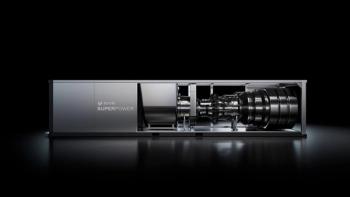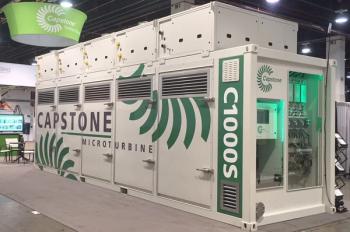
- September/October 2024
- Volume 65
- Issue 5
Turbocompressors with Side Streams—A Challenging Class of Turbomachinery
Turbocompressors with side streams are operated with tight tolerances on operational parameters compared to conventional compressors.
Turbocompressors with side streams offer very complex flow patterns and aerodynamic behaviors. They are used in plants on large, high-power trains for critical services and in larger, more complex arrangements. Historically, compressors with side streams presented difficulties in engineering, simulations, design, testing, commissioning, operation, and monitoring, and often operate at relatively low performance and efficiency.
TIGHT TOLERANCES
Turbocompressors with side streams should be operated with tight tolerances on operational parameters compared to conventional compressors. If compressor performance is maintained within certain operational limits, corresponding errors in flow ratio and pressure at the suction and side-stream inlet must be maintained within some bounds.
As a rule, the recommended variation tolerances for volume flow ratio (side-stream volume to core-flow volume) and inlet pressures (suction inlet and side-stream inlet) are ±4% and ± 2%, respectively. Tighter tolerances are often needed.
HEAVY GAS CHALLENGE
Heavy gases—such as propane, propylene, methyl tertiary butyl ether (MTBE), etc.—have very low gas sonic velocities that produce high Mach numbers in aerodynamic flow paths. For these services, each compressor stage features narrow flow maps characterized by limited surge and choke margins.
Compressors with side streams in these applications present great difficulties; the side streams and associated mixing further complicate the operation and performance prediction because the pressure, temperature, flow conditions, and each section’s exit should be within stringent tolerances to optimize the overall efficiency and performance. It’s important to accurately model, simulate, operate, and monitor the performance characteristics of impellers, diffusers, return channels, and all flow-path components.
ACCURATE SIMULATIONS AND VERIFICATIONS
An important step to operating, evaluating performance, and monitoring a compressor with a side stream is accurate simulation and data verification. Ask the vendor for the compressor curves’ calculation basis. It’s important to know if mixing effects, mixing section losses, and other complex variables are considered. This is different from a conventional compressor, as vendor curves cannot be used for operation, monitoring, and performance evaluations unless the basis and assumptions are fully understood.
These turbomachines should be operated with tight tolerances of flow, pressure, and temperature at the suction and side-stream inlet. Any deviations in operational conditions at these inlets will result in considerable losses at mixing sections and other key parts. Off-design compressor operation may produce additional effects. The result is a significant drop in overall efficiency and other degradations, abnormalities, and deviations.
CASE STUDY I
A 4.5-MW variable-speed electric-motor driven refrigeration turbocompressor was deployed for a critical refrigeration service with a side stream for plant-optimized operation.
There was a spread in the performance data, specifically for generated heads and compressor efficiencies. Based on conventional calculations, the measured efficiency of Section 1 (inlet to side-stream) was 2 - 3% lower than the vendor’s proposed efficiency. The efficiency gap was constant over the flow range. For Section 2 (side-stream to discharge), the measured efficiency was much lower than the vendor’s proposed efficiency. There was around a 5% efficiency gap at the minimum flow and more than a 10% efficiency gap at the maximum flow.
OBSERVATIONS:
- The performance data spread showed compressor sensitivity to operating conditions, particularly flow-ratio and pressures.
- Based on the calculation method used, the side-stream losses were attributed to the downstream section (Section 2). This caused lower efficiency and performance compared to Section 1.
- The variance reduced as the flow decreased toward surge and increased as the flow rose. Due to this effect, Section 2 efficiency gap (difference of vendor’s efficiency and measured efficiency) was relatively low at the minimum flow. This efficiency gap was constantly increased to more than 10% at the maximum flow.
Fine-tuning the flow ratio (side-stream volume to core-flow volume) and inlet pressures within the proposed limits (±4% and ± 2%, respectively) resulted in better overall efficiency. Section 2’s efficiency after adjustment was within 4% of the vendor’s proposed efficiency for the operating range near the best efficiency point.
CASE STUDY II
A 6.8-MW steam turbine-driven process compressor with a side stream performed a critical process service. The side–stream was a recycle flow that recycled back to the compressor to the downstream reactor.
Performance data was widely scattered. The first suggestion attributed low efficiencies to poor gas composition control on the compressor’s process flow; however, investigations showed this related to the compressor sensitivity to flow ratio and operational conditions. Section 1’s measured efficiency was 3 - 4% lower than the vendor’s proposed efficiency. The efficiency difference was relatively constant over the flow variation of Section 1. For Section 2, the calculated efficiency was significantly lower than the vendor’s proposed efficiency—around 20% at the minimum flow and more than 25% at the maximum flow.
OBSERVATIONS:
- The large performance data spread showed extreme compressor sensitivity to operating conditions, particularly the flow ratio. For some operating points, the sectional efficiency was calculated as low as 54 - 55%.
- Based on the calculation method used, side-stream losses were attributed to the downstream section, causing it to appear very low in performance and efficiency.
- The variance increased toward higher flows. However, the efficiency was far below the vendor’s proposed efficiency. For relatively low flows, Section 1’s efficiency gap was scattered around 20% and for high flows, Section 2’s efficiency gap was scattered more than 25%.
These investigations showed the recycle pressure and flow ratio considerably deviated from rated conditions. To solve the problem, recycle pressure and flow ratio were adjusted for the rated conditions. This resulted in operation within 7% of the vendor’s proposed efficiency.
Amin Almasi is a Chartered Professional Engineer in Australia and the U.K. (M.Sc. and B.Sc. in mechanical engineering). He is a senior consultant specializing in rotating equipment, condition monitoring and reliability.
Articles in this issue
about 1 year ago
Myth: Part 1: A Centrifugal Compressor Map is Just Test Resultsabout 1 year ago
Product Spotlight: Baker Hughes' NMBL LNGover 1 year ago
The Global LNG Market: The Rise of LNG Productionover 1 year ago
Turbomachinery International: September/October 2024Newsletter
Power your knowledge with the latest in turbine technology, engineering advances, and energy solutions—subscribe to Turbomachinery International today.





